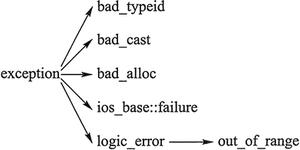Python中super函数的用法
描述
super() 函数用于调用下一个父类(超类)并返回该父类实例的方法。
super 是用来解决多重继承问题的,直接用类名调用父类方法在使用单继承的时候没问题,但是如果使用多继承,会涉及到查找顺序(MRO)、重复调用(钻石继承)等种种问题。
MRO 就是类的方法解析顺序表, 其实也就是继承父类方法时的顺序表。
语法
以下是 super() 方法的语法:
super(type[, object-or-type])
参数
type -- 类。
object-or-type -- 类,一般是 self
返回值
无。
实例
以下展示了使用 super 函数的实例:
#!/usr/bin/python
# -*- coding: UTF-8 -*-
class FooParent(object):
def __init__(self):
self.parent = 'I\'m the parent.'
print ('Parent')
def bar(self,message):
print ("%s from Parent" % message)
class FooChild(FooParent):
def __init__(self):
# super(FooChild,self) 首先找到 FooChild 的父类(就是类 FooParent),然后把类B的对象 FooChild 转换为类 FooParent 的对象
super(FooChild,self).__init__()
print ('Child')
def bar(self,message):
super(FooChild, self).bar(message)
print ('Child bar fuction')
print (self.parent)
if __name__ == '__main__':
fooChild = FooChild()
fooChild.bar('HelloWorld')
执行结果:
Parent
Child
HelloWorld from Parent
Child bar fuction
I'm the parent.
python的类分别有新式类和经典类,都支持多继承。在类的继承中,如果你想要重写父类的方法而不是覆盖的父类方法,这个时候我们可以使用super()方法来实现
class C:
def minus(self,x):
return x/2
class D(C):
def minus(self,x):
super(D, self).minus()
print 'hello'
上面的代码中C是父类,D是子类,我们在D类重新定义了minus方法,就是在C类的功能基础基础上新添print 'hello'功能。super在这里的作用就是在子类中调用父类的方法,这个也是在单继承常见调用super()的用法。那么问题来了
class A:
def __init__(self):
self.n = 10
def minus(self, m):
self.n -= m
class B(A):
def __init__(self):
self.n = 7
def minus(self, m):
super(B,self).minus(m)
self.n -= 3
B()
B(2)
print b.n
那么上面的代码中b.n的输出是什么呢?为什么结果是2呢,而不是2呢?super(B,self).minus(m)明明是调用了父类的minus方法,可是输出结果就是5,是你要明白现在B的实例,而不是A的实例,那么传递的self.n的数值是7,而不是10.
以上是 Python中super函数的用法 的全部内容, 来源链接: utcz.com/z/313588.html





